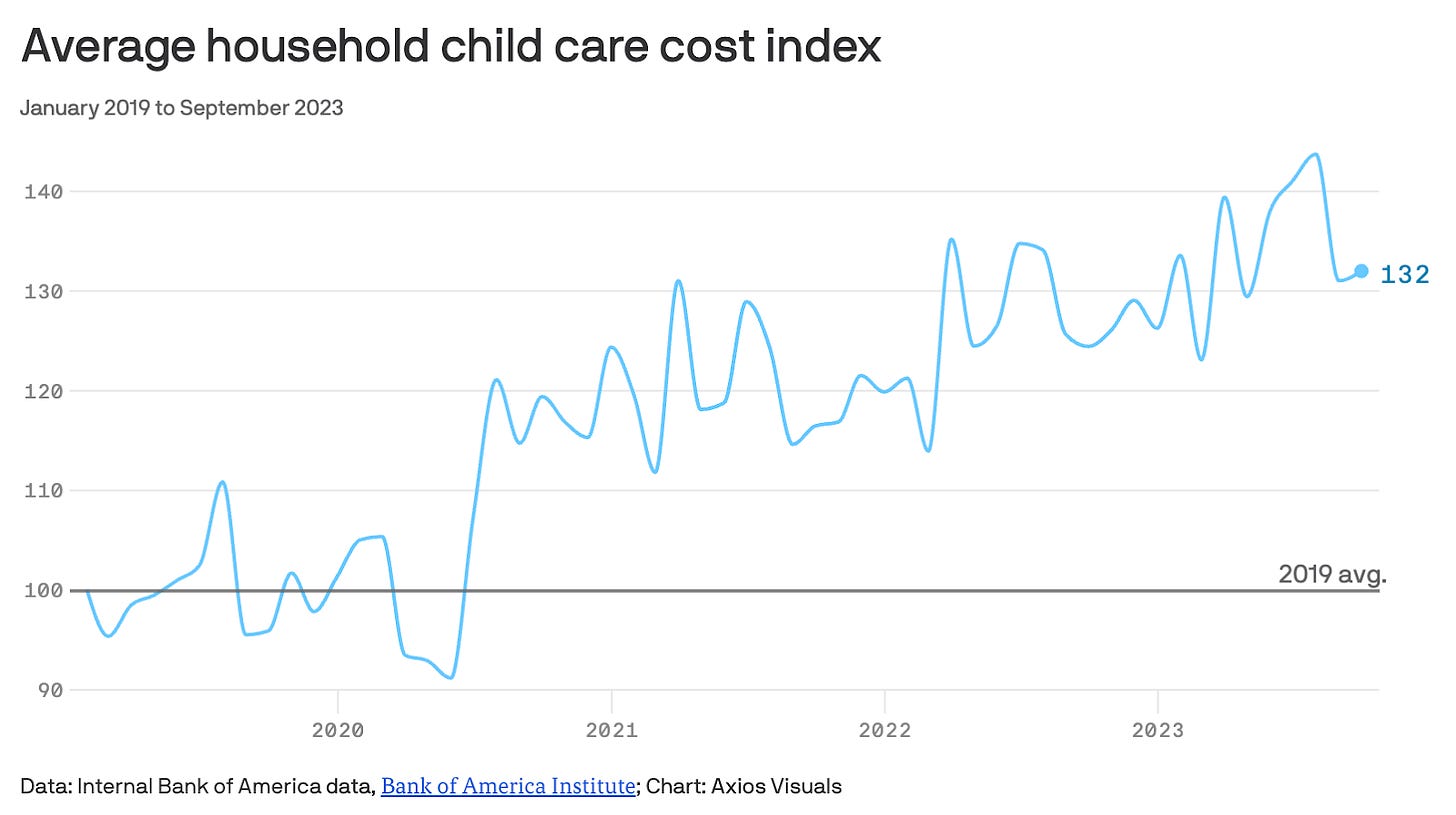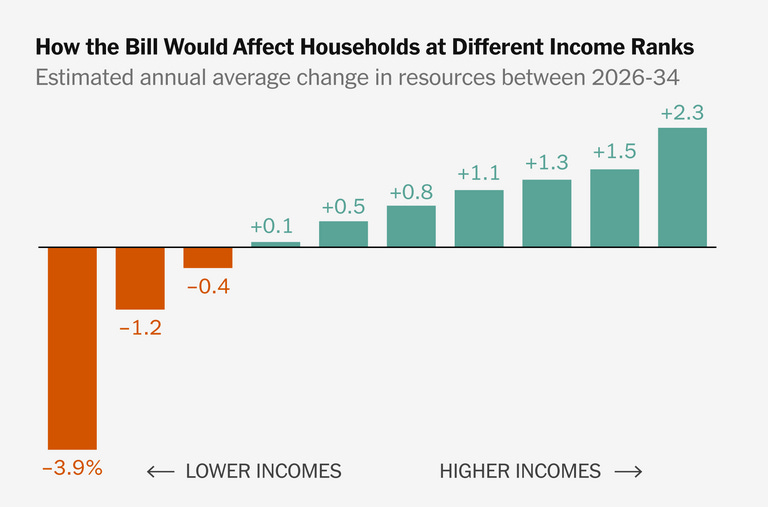A Manufactured Crisis: How Trump’s Cuts Are Gutting Childcare and Hurting Families
There has been an abundance of news, as of late, but what still stands underneath this noise are domestic policy cuts and the One Big Beautiful Bill that will undermine the stability of families across the nation. As schools close their doors for summer break, millions of working parents across the country are scrambling to find room in their budgets and schedules for reliable, affordable childcare and summer activities to cover the hours usually filled by school. But that’s getting harder this year, as costs rise and options dwindle, in large part due to damaging policies from the Trump administration.
Childcare is already one of the biggest expenses for American families, comparable to a second mortgage in some areas. In fact, child care is more expensive than public college tuition in 38 states and Washington, D.C. Across persistent inflation in recent years, childcare costs have also jumped more than 30% since 2019.
Image Credit: Axios
But the childcare crunch this summer isn’t just about rising costs; it’s also about shrinking resources. Just last month, tens of thousands of roles funded through AmeriCorps disappeared after sweeping cuts to the federal agency.
In April, the Trump administration abruptly canceled nearly $400 million in AmeriCorps grants. This rollback wiped out funding for thousands of community organizations that provide free or low-cost summer camps, after-school tutoring, and youth mentoring. America’s Service Commissions, which oversees these programs, warned that the cuts would eliminate 32,000 AmeriCorps volunteer jobs and force as many as 1,000 local programs to shut down.
In effect, the administration yanked away the volunteers who tutor struggling students, run enrichment activities, and keep kids safe when class is out.
The damage has been swift. In Marion County, West Virginia, for example, an after-school mentorship program called Flipside lost its AmeriCorps funding and nearly had to close mid-semester. Only a last-minute patch of alternate funds kept it running through spring. Nationwide, states that didn’t sue to block the cuts are now scrambling to find resources so summer programs don’t evaporate. The result is a chaotic patchwork: some states have court injunctions keeping programs alive, while others – often those with the fewest resources – see critical services vanish. The children and their families pay the price.
The Tariff Tax on Families
Adding to rising care expenses, families are being squeezed by reckless domestic policy initiatives that actively drive up costs. Trump's tariffs have made basic essentials for babies significantly more expensive.
According to new data from the U.S. Congress Joint Economic Committee, new parents are now paying an average of $98 more for just five common baby items: a car seat, crib, stroller, high chair, and baby monitor. A broader analysis using Babylist data shows that across 11 essential baby categories, costs have jumped by an average of $400 per family, this leads to an additional $875 million in baby-related expenses nationwide in 2025. For parents with multiple children, including newborns, facing school closures and summer programming cuts, this becomes an unmanageable economic burden, all manufactured by self-inflicted policy choices.
Image Credit: JEC
The Big Ugly Bill
The cuts to AmeriCorps and other programs are just the beginning. The Trump administration's broader agenda embodied in what the president has dubbed his Big Beautiful Bill, threatens to turn this childcare crisis into a full-blown catastrophe for American families.
If this destructive budget reconciliation bill becomes law, millions of families and children will face hunger, greater economic hardship, and declining access to critical services. The bill harms children in several key ways:
Child Tax Credit Restrictions: It increases hurdles for families trying to access the Child Tax Credit without adjusting the benefit to account for inflation and rising costs.
Medicaid Cuts: It guts billions from Medicaid via various workarounds from work requirements to eligibility rules, which provides health coverage for millions of children. We have written about this more here.
SNAP Reductions: It cuts billions from the Supplemental Nutrition Assistance Program (SNAP), the country's biggest anti-hunger program for low-income Americans.
Who Pays the Price
According to the Congressional Budget Office, the lowest-income households, those in the bottom 10%, would lose about $1,600 per year, or 3.9% of their income in 2025. These cuts are mainly driven by reductions in in-kind supports like Medicaid and SNAP. In contrast, households in the middle deciles would see modest gains of $500 to $1,000, while those in the top 10% would gain an average of $12,000, not from working more, but from tax breaks.
This bill shifts resources upward. It strips aid from those who need it most to deliver tax cuts to those who need it least.
Image Credit: The New York Times
Critical Programs at Risk
This means states and local governments, many already facing budget shortfalls, will be forced to fill the gaps, likely without the necessary resources. Kids will suffer the most, especially those in programs like Sun Bucks under SNAP, which ensure that kids don't go hungry during the summer months when school meals aren't available. Without them, many children will be left without access to food.
The bill also targets Head Start, the federal program that provides comprehensive early childhood education, health, nutrition, and parent involvement services to low-income children and families. A UCLA study published this year found that low-income kids who had a Head Start provider in their county ended up graduating from high school and college at higher rates than their peers without a Head Start provider. Yet this proven program faces elimination under the administration's efficiency drive.
The Long-Term Damage
The ripple effects will stretch far beyond summer 2025, continuing to widen educational gaps, strain already struggling families, and place even more pressure on parents navigating economic uncertainty and a fragmented, underfunded childcare system. The effects of funding cuts and freezes are irreversible, even if the courts decide they are unconstitutional. Many programs are unable to access funding after the freeze.
It Doesn’t Have To Be This Way
Reading all this, it's easy to feel angry or discouraged. The problems are large and the policies making them worse are coming fast and without regard for vulnerable communities. But it doesn't have to be this way. This is indeed a policy choice, and different choices can lead to better outcomes. We already have blueprints for action that would ease the burden on American families. Recent proposals are here, here and here.
Investing in children leads to better health outcomes, higher educational attainment, and increased earnings as adults—every dollar the federal government invests in programs that benefit children yields $10 or more in societal returns. We must do everything we can to safeguard the programs and resources that allow kids to learn, grow, and thrive, especially during the summer when many families may need support the most.







